6 Business Model Innovation Examples (+ Visual Scorecards)
Jul 23, 2024 • 11 min read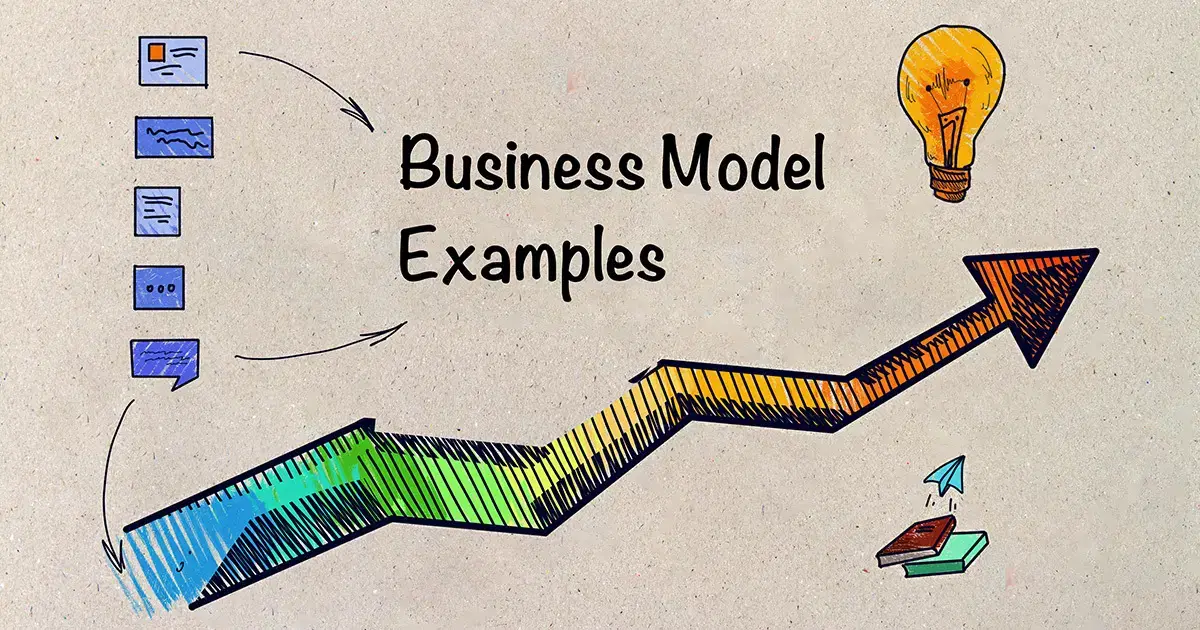
A business model is a blueprint for how a company creates, delivers, and captures value.
Alex Osterwalder, co-author of "Business Model Generation"
What is Business Model Innovation?
Business Model Innovation is one of the most potent ways to change established markets or to create new ones. Through business model innovation, companies develop entirely new approaches to delivering customer value. This requires a complete overhaul of core business practices, including revenue generation, cost management, and distribution channels.
Business model innovation key driver of long-term business success. By embracing flexible models, companies can adapt to shifting customer preferences, ensuring they remain relevant and competitive.
In this article, we will provide several examples of such innovations. We will compare a company that disrupts a market by introducing a successful business model innovation with its average competitor. The comparison will evaluate the challenger’s potential to provide new customer value using seven criteria.
Innovation Evaluation Framework
We will use a comparison criteria which consist of 7 factors. The framework will enable us to provide a holistic overview of the challenger and the incumbent and what led to the success of the innovating company. Let’s dive in!
1. Tailored Experience
This factor evaluates how well the business model provides personalized and adapted products or services based on consumer needs and preferences.
2. Circular Resource Utilization
This assesses the ability of the business model to reuse resources used to serve one customer for others, promoting sustainability and efficiency. This is becoming increasingly important, given the increasing effects of climate change.
3. Asset Sharing
Asset sharing examines whether the business model enables the sharing of assets across different parties, demonstrating the principles of the sharing economy.
4. Consumption-based Pricing
This part of the framework analyzes if the business model offers pricing based on the actual use of the product or service. This aligns costs directly with usage.
5. Partnership and Cooperation
This component measures the extent to which the business model fosters stronger cooperation and partnerships between different stakeholders within the ecosystem.
6. Flexibility and Responsiveness
Looks at the ability of the business model to adapt to changes in demand, supply, costs, and other dynamic market conditions.
7. Technology Innovation Tailwinds
This criteria considers how technological advancements are leveraged to create new opportunities, enhance efficiency, and improve the overall business model.
Using the criteria above, the incumbent will automatically get 3 out of 5 points as a baseline. The challenger will get 4 or 5 if they exceed or significantl exceed their performance in that category compared to the incumbent. Respectively, they will get 2 or 1 points if they perform worse than the competitors.
6 Examples of Business Model Innovation
1. Airbnb
Founded in: 2008
Revenue for 2023: $8.4 billion
Country of Operating: Global
Existing Alternatives: Traditional hotels
Airbnb's business:
Airbnb operates a global online marketplace for lodging, primarily homestays for vacation rentals, tourism activities, or business trips. It connects hosts with travelers who seek unique accommodations and experiences. This allows users to book short-term rentals directly from property owners.
Airbnb vs Hotels
Airbnb excels in almost all categories ahead of hotels. Empowering homeowners to provide high-quality and highly personalized places to stay sets them apart from hotel chains that bet on standardization and familiarity.
Airbnb also piggybacks on the emerging, at the time, sharing economy. It offers additional income for property owners and creates strong engagement between hosts and guests. Compare the huge cost of creating a small family hotel with renting a single room from a home. Airbnb makes that revenue stream available to significantly more people with considerably smaller investments.
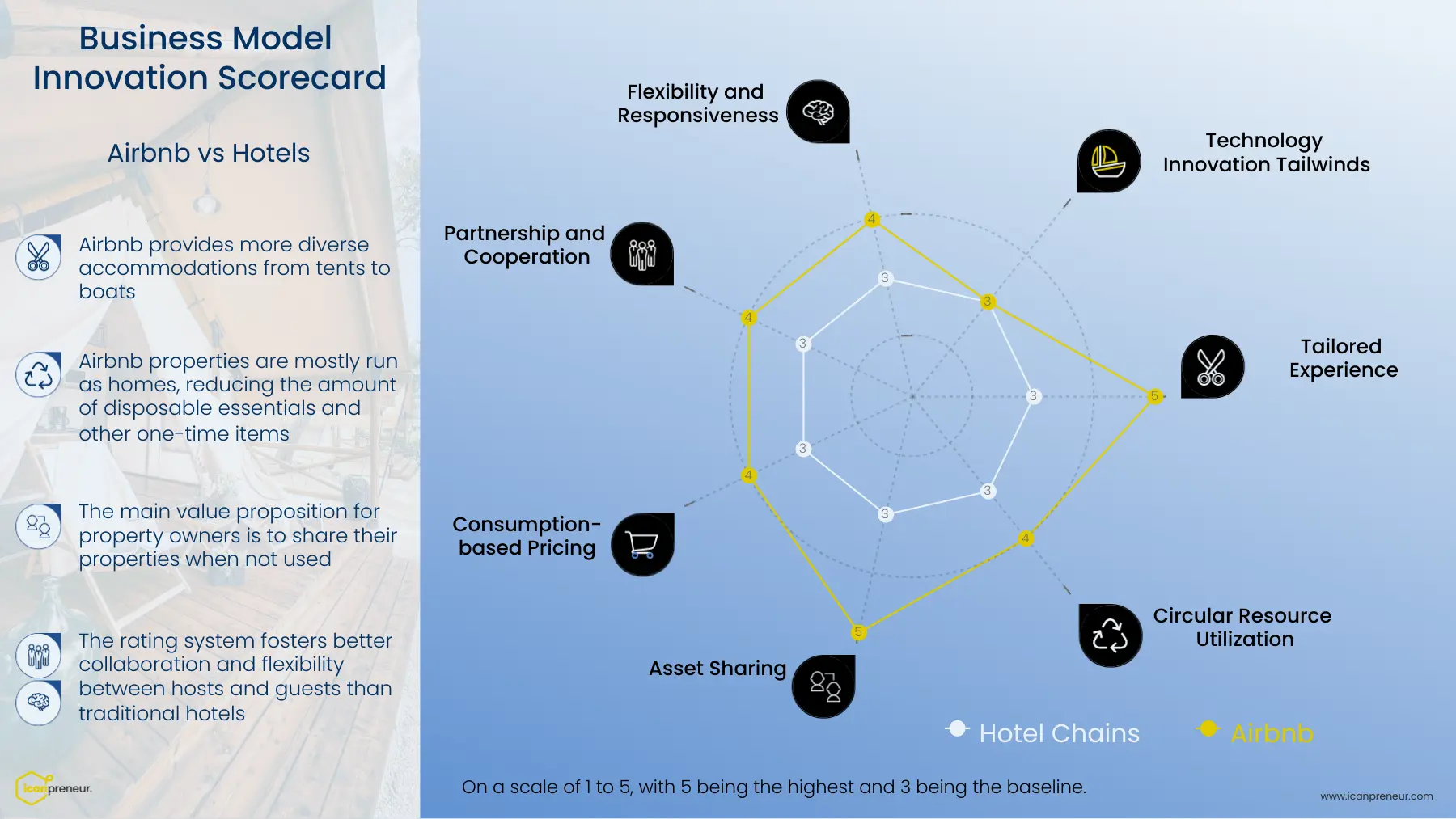
2. Spark
Founded in: 2019
Revenue for 2023: Not publicly disclosed
Country of Operating: Bulgaria, Lithuania
Existing Alternatives: Traditional car rental services, ride-sharing apps (e.g., Uber, Bolt), and other car-sharing services
Spark's business:
Spark is a car-sharing service that allows users to rent vehicles by the hour or day. The business targetes large urban areas in Eastern Europe. It focuses on convenient, on-demand access to cars directly from the street. Spark operates with a fleet of vehicles available for spontaneous rentals via a mobile app.
Spark vs Taxi Services
Spark creates a unique blend between taxi services' on-demand availability and traditional rental services' full control of the traveling experience. It offers a wide range of car models that cater to the needs identified by different customer segments.
The use of different technologies is an excellent example of how tech can make it possible to pick up a random car from the street, drive it, leave it, and pay for it without ever signing a paper document.
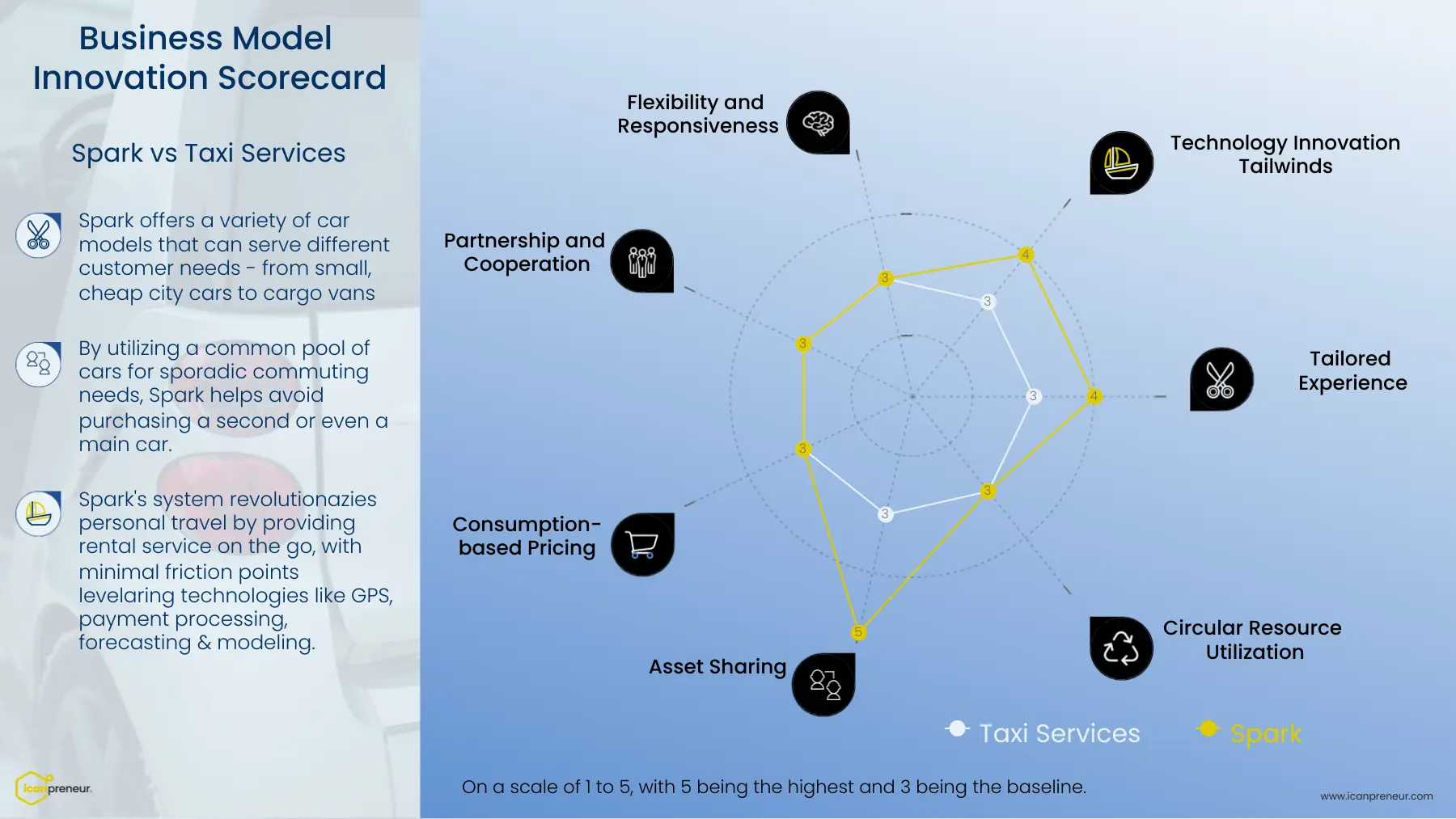
3. Ryanair
Founded in: 1984
Revenue for 2023: €10.4 billion (approximately $11.1 billion USD)
Country of Operating: Primarily operates across Europe
Existing Alternatives: Traditional full-service airlines (e.g., British Airways, Lufthansa)
Ryanair's business:
Ryanair is a low-cost airline known for its budget-friendly fares and no-frills service. It focuses on providing affordable flights across Europe by minimizing operational costs, offering basic services, and charging additional fees for extras such as checked baggage and seat selection.
Ryanair vs Traditional Full-Service Airlines
Ryanair (similar to Southwest in the US) is a company that sacrifices many additional services to focus on delivering core value at a minimum price. This model proves to be especially successful in Europe, where most flights are short distances, and the perceived value from additional services is minimal.
Ryanаir continues to expand the range of services offered before and after the flight, such as insurance, accommodation, and car rental services through partners. This helps them own the whole traveling experience.
Ryanair's cheap travel prices create a competitive advantage for Ryanair that is hard to beat by traditional full-service without disrupting its revenue model. That’s why many traditional companies have affiliates in the low-cost segment.
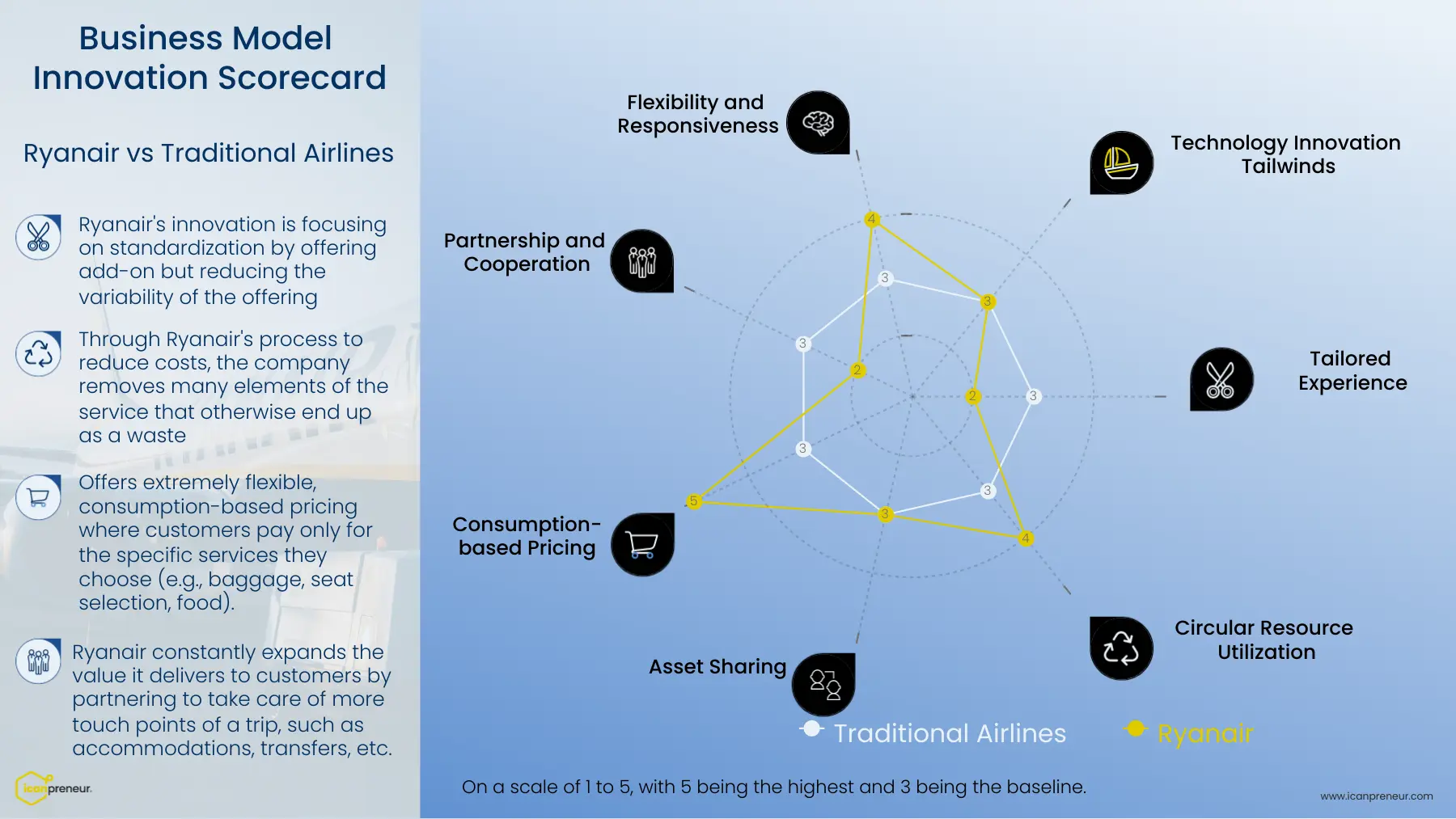
4. Uber
Founded in: 2009
Revenue for 2023: $32.7 billion
Country of Operating: Operates in over 70 countries, including the United States, Canada, United Kingdom, Australia, India, and many European countries.
Existing Alternatives: Traditional taxi services, other ride-sharing platforms (e.g., Lyft, Grab, Didi)
Uber's business:
Uber is a ride-sharing and mobility service that connects riders with drivers via its mobile app. It offers a range of services, including ride-hailing, food delivery (Uber Eats), and freight transportation.
Uber vs Taxi Services
Uber's platform is known for its dynamically adaptable pricing. This provides unseen-before flexibility in the demand and supply of the platform compared to traditional taxi services.
The rating system the company creates in practice provides a much more reliable signal about the quality of the service provided in real-time than the traditional licensing mechanism. Uber provides car owners the opportunity to capture more value from their ownership by giving them an easy way to create an additional income stream.
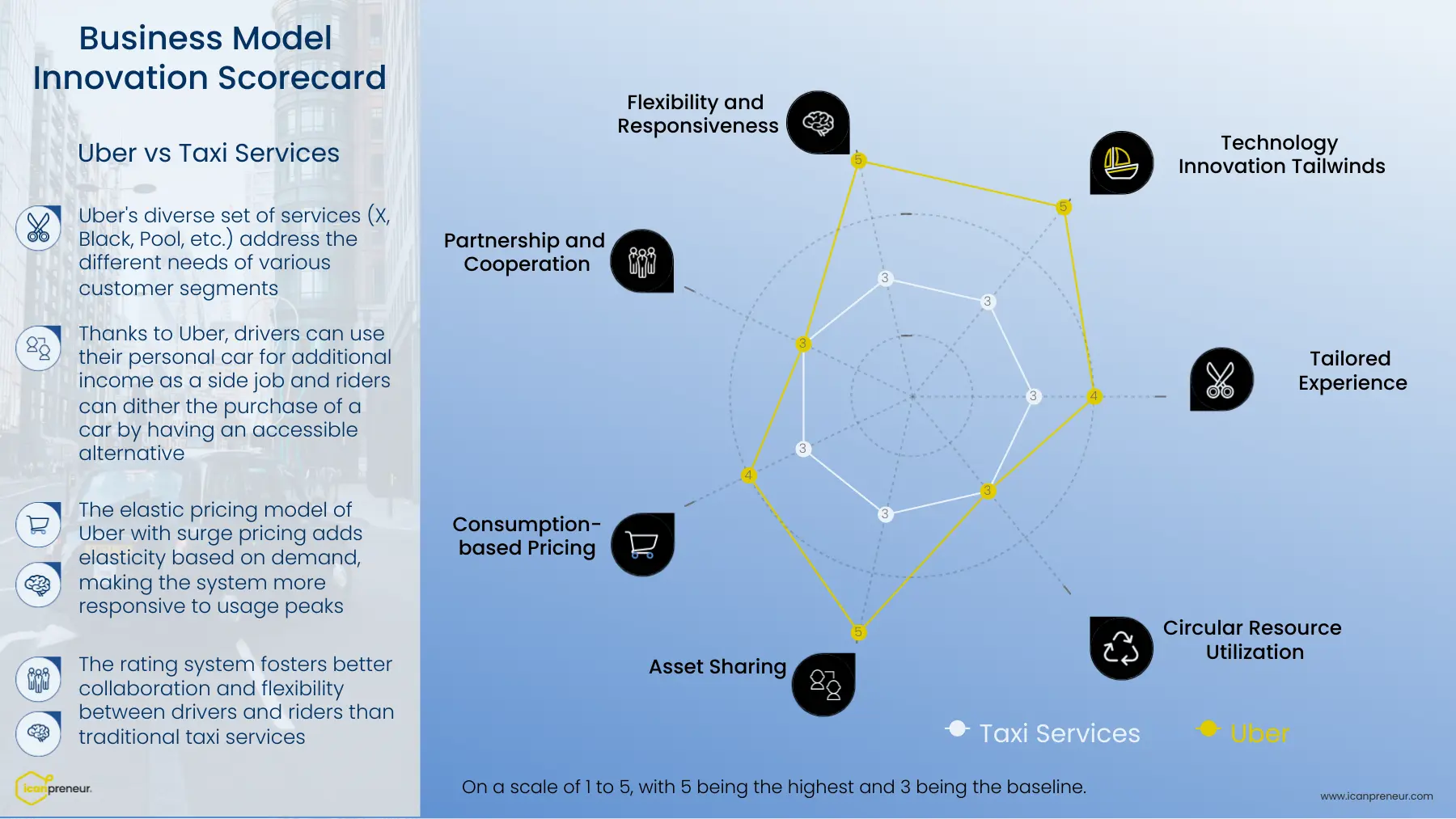
5. Revolut
Founded in: 2015
Revenue for 2023: $1.4 billion
Country of Operating: Operates in over 35 countries, including the UK, the US, Canada, Australia, various countries across Europe, and some regions in Asia.
Existing Alternatives: Traditional banks
Revolut's business:
Revolut is a fintech company offering various digital banking services. It provides users with features such as international money transfers, currency exchange, cryptocurrency trading, budgeting tools, and a multi-currency debit card. Through its app-based platform, Revolut aims to simplify financial management and provide cost-effective solutions.
Revolut vs Traditional Banks
A big part of Revolut’s success comes from the company's operating primarily as a technology company, embracing agile development practices. Shipping a new banking product is equivalent to updating an application, as opposed to going through all the motions in a traditional banking institution.
Revolut also goes beyond traditional bank services, offering a whole suite of third-party services in its premium plans. These include a VPN, dating app, insurance, stock trading, etc.
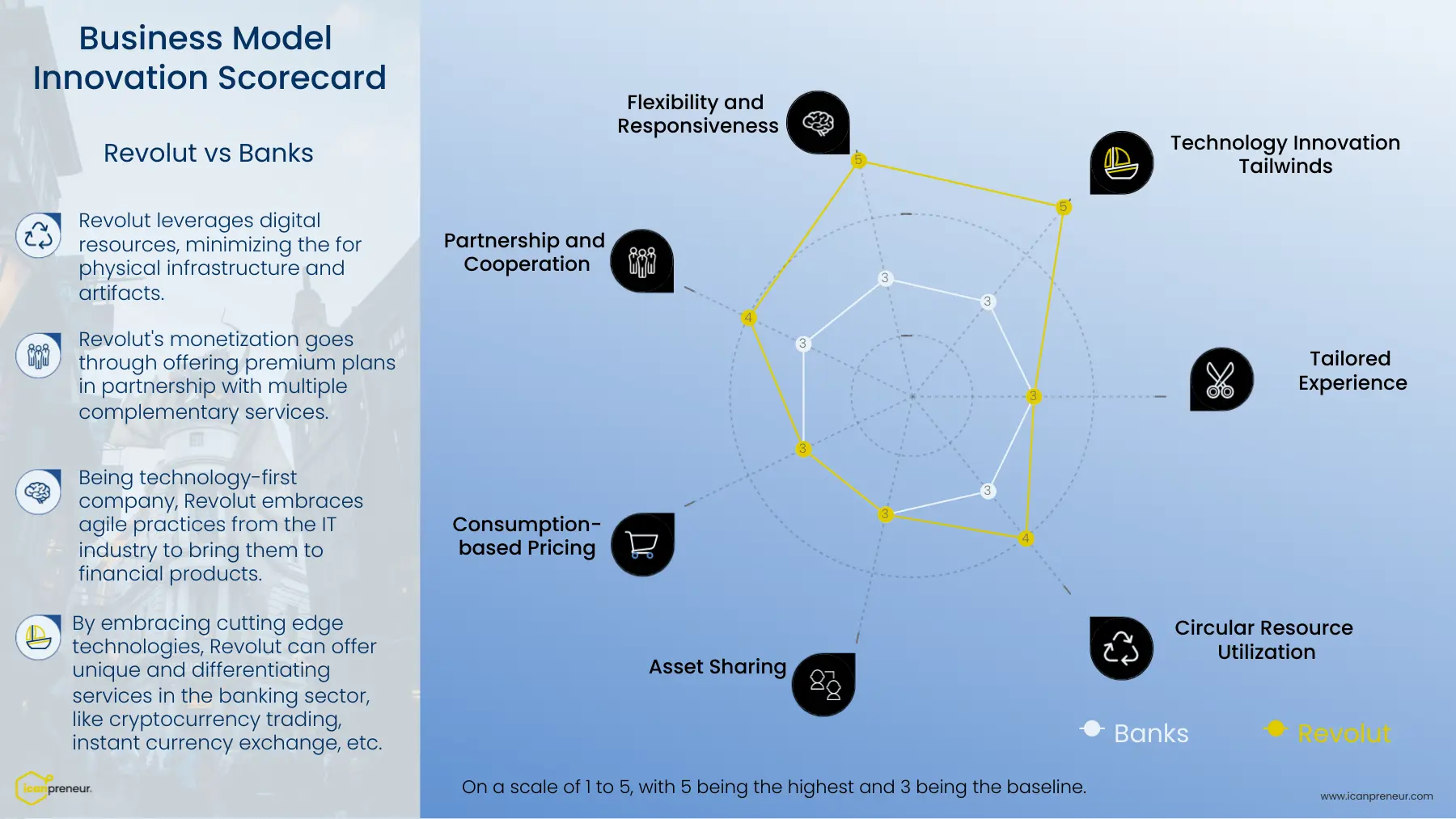
6. Peloton
Founded in: 2012
Revenue for 2023: $2.1 billion
Country of Operating: Primarily operates in the US, Canada, the UK, and Germany, with plans for further expansion.
Existing Alternatives: Traditional gym memberships, home exercise equipment brands (e.g., NordicTrack, Bowflex), fitness apps (e.g., Apple Fitness+, Fitbit)
Peloton's business:
Peloton is a fitness technology company that provides high-end stationary bikes and treadmills for home use. All products are integrated with a subscription-based streaming service for live and on-demand workout classes. Through its platform, Peloton focuses on creating a community-driven fitness experience.
Peloton vs Fitness Chains
Peloton brings the personalization of the fitness community into the comfort of the home. The company has made a breakthrough innovation by combining a hardware piece, usually a one-time payment purchase, with a subscription model to create a brand new type of business model for fitness equipment. Its strong community elements make their bikes not just the regular dress hanger but your connection to other fitness enthusiasts.

You can use the same comparison framework to evaluate the potential of your company to disrupt competitors through business model innovation. We have prepared a blank template file that you can use for that purpose.
The Impact of Failing to Adjust Your Business Model
Kodak’s story is a cautionary tale for companies that aren’t willing to adapt their business model quickly to market changes. Kodak was the market leader across the whole value chain of photography—from selling cameras to offering film cassettes to chemistry for developing films and albums for printed photos.
Digital photography disrupted the entire value chain, eliminating many customers' needs which were no longer met by the traditional system.Kodak fell victim to that technology development and went out of business.
The Next Industry Up for Disruption?
The electricity industry is one of the best examples to observe as it seems to be up for significant changes which are driven by several factors:
- Production doesn’t come from just a few big producers anymore. With the emergence of photovoltaics and wind turbines, virtually everybody can produce electricity not just for themselves but for consumers through the grid.
- Consumption has been left unchecked for quite too long. Since electricity is commoditized in most regions of the world, consumers have very little incentive to control their energy consumption. This is especially the case for non-priority loads.
Heating a boiler with hot water or charging an EV could be offset within a few hours without making any difference for the consumer. At the same time, it will deliver huge value to the grid during peak demand.
- Prices are relatively fixed and don’t account for the varying supply and demand.
- Reducing CO2 emissions means removing certain sources of energy, like coal, from the market while making space for others that lack elasticity, like photovoltaics.
- IoT technologies make it very accessible to provide smart elements to the grid.
Factors such as technology innovation, the need for flexibility, partnership and cooperation, create the perfect environment for new business models to emerge.
We can already see it happening with energy communities. They offer the opportunity for local residents to form an organization that produces electricity for their own needs.
The excess is returned to the grid bringing many benefits such as:
- reducing the cost of the energy,
- saving CO2 emissions,
- sharing the big upfront capital expenses needed to set up a small power plant.
More innovation projects will continue to emerge and introduce new business models. The energy industry has been mostly unchanged for decades and we suspect that interesting changes are just ahead.
Wrap Up
Innovating on the business model level often leads to new product or service categories. These types of innovations unlock more value for customers and provide more opportunities for companies.
Throughout this blog post we covered six real life examples of business that brought innovation and disrupted the market in which they operate. We wanted to highlight how such innovations can become game-changers and positions business as market leader against long-standing competitors.
If you want to explore more about the different types of innovation models or access practical tips and guidance from experts subscribe to our blog.
Author
Product @ Icanpreneur. Coursera instructor, Guest Lecturer @ Product School and Telerik Academy. Angel Investor. Product manager with deep experience in building innovative products from zero to millions of users.
